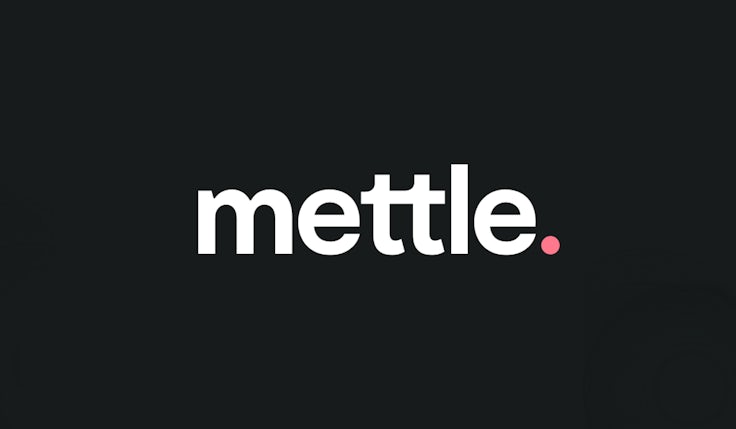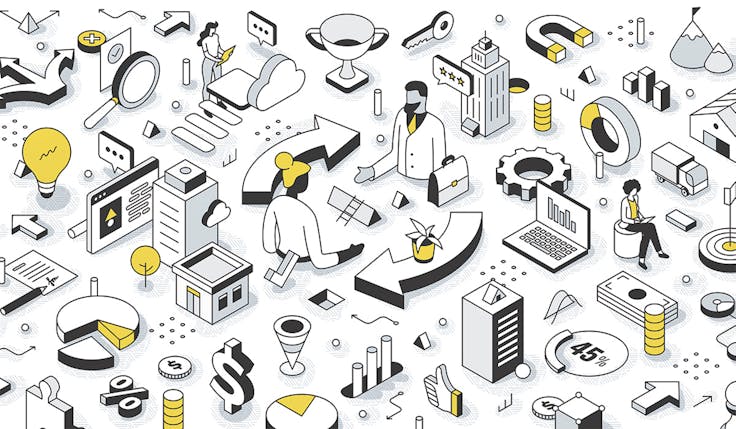The 99:1 rule: How to invest in a recession
For B2B firms, investing in brand marketing is the best bet in good times, and it’s an even better bet in bad times when the pool of current buyers shrinks from 5% to 1%.

“Only when the tide goes out do you discover who’s been swimming naked.”
That colourful quip comes from Warren Buffett, who built a $110bn fortune by deftly navigating economic downturns. So today, let’s ask ourselves the $110bn question: if Warren Buffett were a B2B marketer, how would he invest during a recession?
Sadly we can’t ask Warren directly, since he never returns our calls. But we think we know what he’d say: be greedy when others are fearful, and focus on the fundamentals.
For us, the most fundamental principle in B2B (and B2C) marketing is the 95/5 rule, as articulated by Professor John Dawes of the Ehrenberg-Bass Institute. The concept is simple: at any given time, 95% of customers are out-of-market, and only 5% of customers are in-market. Most buyers are future buyers, and marketing’s main job is to increases future sales.
But does the 95/5 Rule still hold true in a downturn? And if so, what are the implications for marketers?
The ‘Flippening’ will usher in a Golden Age of B2B marketing
In recessions, does 95:5 become 99:1?
Let’s start by working backwards from the customer.
First, do B2B buyers change their purchasing behaviour in a recession? Yes, of course.
Most big B2B purchases get delayed as businesses cut costs to manage their margins. Delays in purchases reduces the number of buyers in market – that’s what a recession is after all: a reduction in economic activity for two successive quarters. So the 5% of current buyers shrinks to more like 1%, and the 95% of future buyers swells to more like 99%.
Simply put, in a downturn, economic demand shifts to future buyers.
In light of this observation, let’s re-visit what we believe is the biggest misallocation of capital in B2B marketing. We are, of course, referring to the unfortunate fact that B2B marketers spend roughly 92% of their budgets chasing after 5% of their customers. We tend to ignore the enormously-more-valuable segment of future buyers, who are the source of future cash flows. We over-invest in short-term sales activation and under-invest in brand building, which primes future buyers long before they enter the market (and boosts short-term sales too).
In a recession, many B2B marketers double down on this mistake.
We all know that marketing budgets are usually the first line item that gets cut during a recession, but the cuts are not evenly distributed. Brand advertising often gets cut the deepest, and those freed-up-funds are often re-allocated to lead generation activities.
Recycling old creative and cutting sub-prime media ought to free up enough capital to return some money to the CFO while also running a heavier brand advertising mix.
But that doesn’t really make much sense, because the pool of leads has contracted. So most companies are competing to serve “act now” messages to buyers, at a time when most buyers literally cannot act now. Our industry loves to talk about right person, right message, right time, but the reality is more like wrong person, wrong message, wrong time.
Instead of doubling down on lead generation, we should be doubling down on memory generation, and investing in effective brand advertising that increases future demand from future buyers. As our mentor Peter Field correctly observed, “brand advertising is not about profiting in recession, it is about capitalising on recovery.” When buyers re-enter the market, the most memorable B2B brands will end up capturing the majority of sales.
Marketers need to think harder about where to cut and where to invest. A 2010 article in the Harvard Business Review called Roaring Out Of Recession articulated the best blueprint for brands:
Within this group, a subset that deploys a specific combination of defensive and offensive moves has the highest probability – 37% – of breaking away from the pack. These companies reduce costs selectively by focusing more on operational efficiency than their rivals do, even as they invest relatively comprehensively in the future by spending on marketing, R&D and new assets.
B2B brands need to think past the recession and invest in advertising that sets their companies up for future success. The fact most B2B businesses do the exact opposite just makes the arbitrage opportunity even bigger.
Three rules for more effective B2B marketing
Where to cut and where to invest
We acknowledge you will probably have to cut marketing budgets somewhere, we just reject the idea that brand advertising is what should get cut first. Here’s another uncomfortable truth: there’s many other line items that marketers would be better off trimming.
We’d start by reviewing your creative budget. According to our least popular research, 77% of B2B ads can be expected to generate *zero* growth for companies. Why? Because most B2B ads go too heavy on the rational product details and too light on the branding. Ads only work if they capture customer attention and get attributed to the brand. So if you need to cut marketing budgets, try recycling an old ad that customers remembered and recognised (one is usually all you need) instead of spending money on new ads. Research shows that great creative doesn’t really wear-out – it wears-in and becomes more effective over time.
Next let’s train our microscope on media. B2B media buying is rife with waste. Third-party B2B data is only accurate about 14% of the time, according to new research from professors Nico Neumann and Catherine Tucker in partnership with HP. Meanwhile, premium media channels become cheaper in recessions as advertisers go dark. You know what Warren Buffett would call that? A buying opportunity.
Recycling old creative and cutting sub-prime media ought to free up enough capital to return some money to the CFO while also running a heavier brand advertising mix that generates some short-term sales as well as positioning the brand for excess long-term growth.
Investing in brand marketing is the best bet in good times, and it’s an even better bet in bad times, when there’s steeper competition for a dwindling number of in-market buyers.
The tide is going out.
It’s time for B2B marketers to put on their brand bathing suits.






